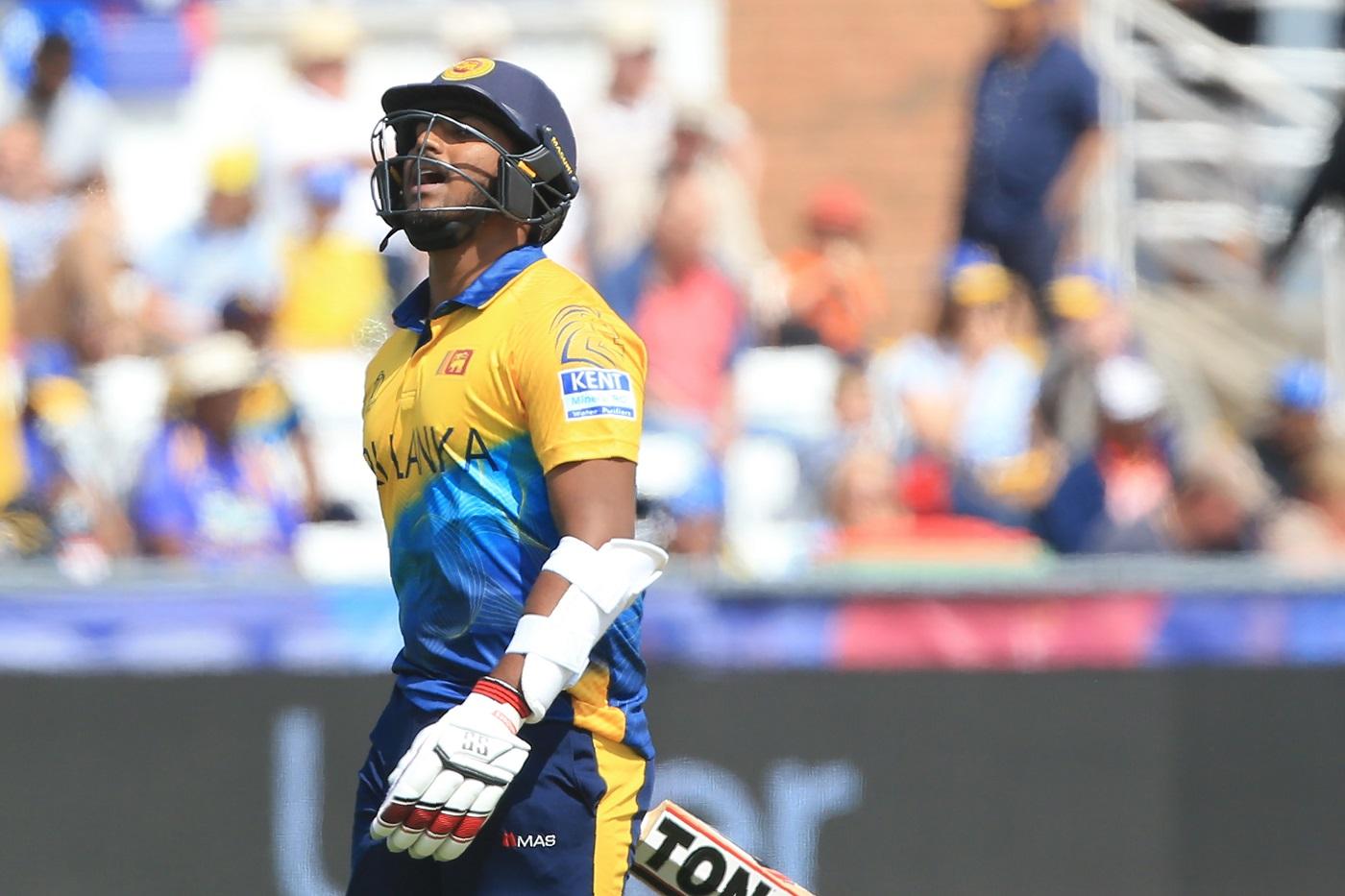08 Jul 2019 - {{hitsCtrl.values.hits}}

By Champika Fernando in Leeds
When his wife was pregnant with their first child, Colin Fernando prayed hard for a boy. Because he had only one dream: and that was to see his son play cricket.
Colin’s wish was fulfilled with the birth of who is now the new boy wonder of Sri Lankan cricket: Avishka Fernando. The sporting world is peppered with tales of pushy parents. Colin isn’t shy to admit he is one of them. As a youngster, he had wanted to play cricket at professional level but the dream was shattered early in his school career.
“I wasn’t a bad player,” he said, “but I was never given the opportunity. So his aspirations ended at U-15 level.
Now, he is living that dream through Avishka, who is today seen as Sri Lanka’s brightest cricketing prospect on the international stage. Experts believe he is an investment for the future.
Colin didn’t just want a boy who played cricket. He wanted him to be “the one that played on TV”. Avishka was born on April 5, 1998, and is named after Avishka Gunawardene, former Sri Lankan cricketer who made his international debut a few weeks before his birth. Today, Colin is “the happiest father in the world”. He had backed his dream even in the face, at times, of strong resistance from his wife.
“There were countless times I received her (wife’s) ire for pushing Avishka to play cricket,” he readily admitted.
“But my instinct was so strong that I continued to push him. Sometimes, she was so mad she would throw his playing gear away because of the amount of time he spent on cricket. I understand her sentiments because she wants him to concentrate on studies. But I knew from a very small age that he is going to make the cut. So despite the resistance, I continued to support his career.”
Avishka’s mother’s concerns were valid. In Sri Lanka, unless one is in the national team, one doesn’t get anywhere in life as payments in the first class system are below average compared to other countries. But Avishka aspired to be a cricketer of Virat Kohli’s class and caliber.
“I was not that keen on studies,” the 21-year-old admitted.
“So, it was never a nuisance when my father pushed me all the time to play cricket. Amma used to scold me and my father a lot when I didn’t do my studies but my love is playing cricket. My father is obviously the one who was behind my career right through and credit to him for making me the cricketer I am today.”
After an impressive stint with Sri Lanka A back in 2016, Avishka was fast-tracked to the national team without any experience at first class level. It was a debut to forget as Australian paceman Mitchell Starc trapped him leg before and he departed for a two-ball duck in his maiden ODI. Two years on, he made his re-entry with a smashing century against the West Indies.
“I had a very good series in England where I hit two centuries to lead Sri Lanka to victory in the three-match series,” Avishka told the Sunday Times after his maiden century (a blistering 104 of 103 balls at the Chester-le-Street against West Indies).
“Sadly, I could not impress when I was handed the debut in the big league. It took me two years to make a comeback to the senior side. In between, I played a lot of cricket with Sri Lanka A and the Emerging Team. This really helped me build confidence.”
His innings was a breath of fresh air to a team that has struggled to put on a match-winning total at this year’s World Cup. In the process, Avishka became the world’s third youngest World Cup centurion having achieved the milestone at 21 years and 87 days. Ireland’s Paul Stirling (20 years and 196 days) was the youngest to have done so, followed by Australia’s Ricky Ponting (21 years and 76 days).
“It was an outstanding hundred,” said Head Coach Chandika Hathurusingha.
“But his innings against England is one of the highlights.”
Playing his maiden World Cup game against England, Avishka did “an Aravinda”. The senior had scored 66 off 47 balls after India reduced Sri Lanka for 2 for 1 run in the World Cup semi-finals in 1996. Avishka smashed 49 off 39 balls after the hosts brought Sri Lanka to just three runs for the loss of two wickets by the third over of the match.
“I saw him for the first time during the T-20 tournament in Kandy,” Hathurusinghe said.
“He hit some clean shots off Lasith Malinga and Nuwan Pradeep. We are wondering why he wasn’t in the High Performance Center. We wondered whether he could be fast-tracked. I was told that he had been down with dengue and not in the system, having been out for six months. I saw the potential. The technique and timing he has is awesome. In Scotland, he played well. I never expected him to play this kind of knock so early.”
While there are many to lavish praise on Avishka now, it was Colin that laid the foundation. He bought Avishka a plastic bat and ball just a few weeks after he learned to walk.
“I showed him a drive and asked him to imitate me,” Colin recalled.
“He did exactly as I showed him before losing control and falling down. This is when I thought, boy, he’s going to live my dream.”
Colin was so keen that he prepared a practice net at home with a concrete strip so that Avishka could hone his skills. “By the time he went to an academy, he knew most of the basics skills of a batsman. So, at just six years of age, he played as the academy’s opening batsman in the U-13 team.”
“Since I had played cricket at junior level, I had a basic understanding of the game,” Colin continued.
“I taught him everything I knew and he replicated these perfectly in practice. He was so stylish that I used to invite the neighbours to watch him play at home. When he went to the academy in Wadduwa, he was well equipped with the basic skills and made an impression very early.”
Colin was meticulous in his plans. He managed to get Avishka enlisted at St. Sebastian’s College, Moratuwa, a school with a proud cricketing heritage. It has produced a number of international cricketers, notably Dulip Mendis, Romesh Kaluwitharana and Prasanana Jayawardene. Even Avishka’s first school captain, Amila Aponso, played ODI cricket for Sri Lanka.
“I can still remember when he went for selection for the school team,” Colin said.
“He was asked to bowl at a single stump. He managed to hit the stump in the two balls he bowled and they got down his name. Then he was asked to bat and he played some very good shots, impressing the coach. The rest is now history. He made a huge impact as a schoolboy cricketer.”
While leading the U-13 team, Avishka was handed a first IX debut of the school in 2012 under Amila Aponso. He was 12. Since then, he played in six big matches, leading them in the 2015/16 encounter. He was also a sprinter and has won several champions at the provincial level.
“I made him watch lot of cricket and I always told him ‘Look I want you to play cricket on TV’,” Colin said.
“I made him play lot of cricket and I am proud of my son and I know my wife is proud me and my son too.”
Colin never discourages his son when he gets out cheaply: “I only tell him to do better next time and he has done that.”
Like Avishka, there have been many young cricketers who have announced themselves at the highest level but the challenge now for young Avishka is to maintain the standard he has set himself in the future.
“I am happy for what I have done but I know the challenges ahead. I want to do it consistently,” said Avishka as he looks forward for a long-future with Sri Lanka cricket.

09 Jan 2025 6 hours ago
09 Jan 2025 7 hours ago
09 Jan 2025 09 Jan 2025
09 Jan 2025 09 Jan 2025
09 Jan 2025 09 Jan 2025